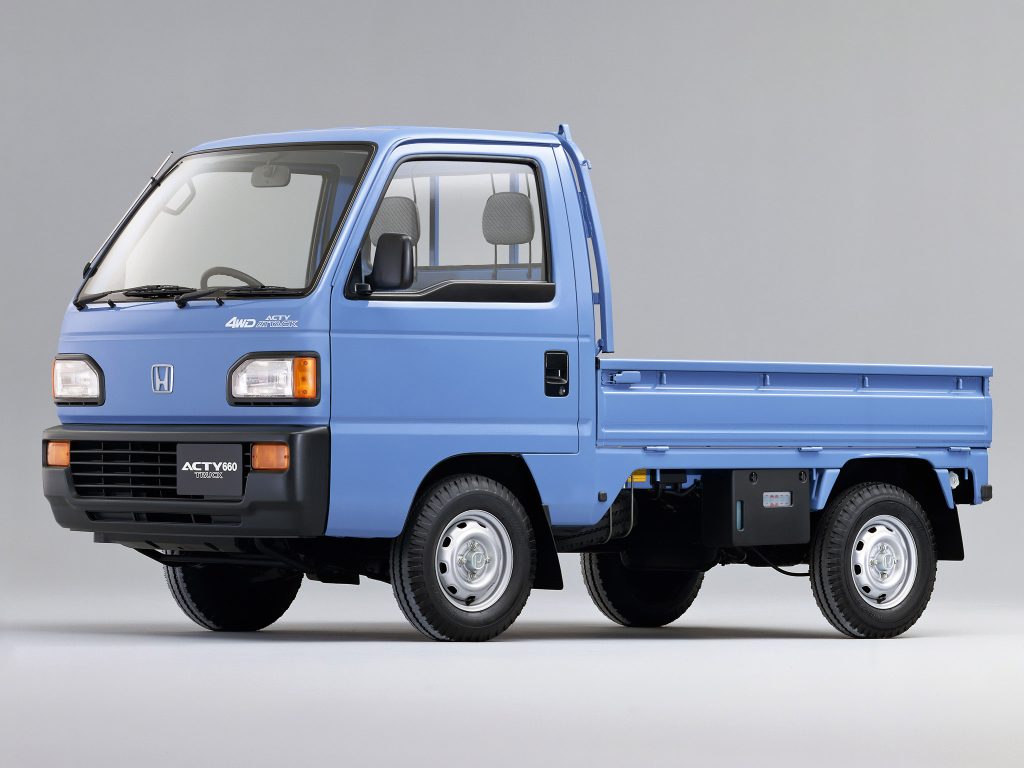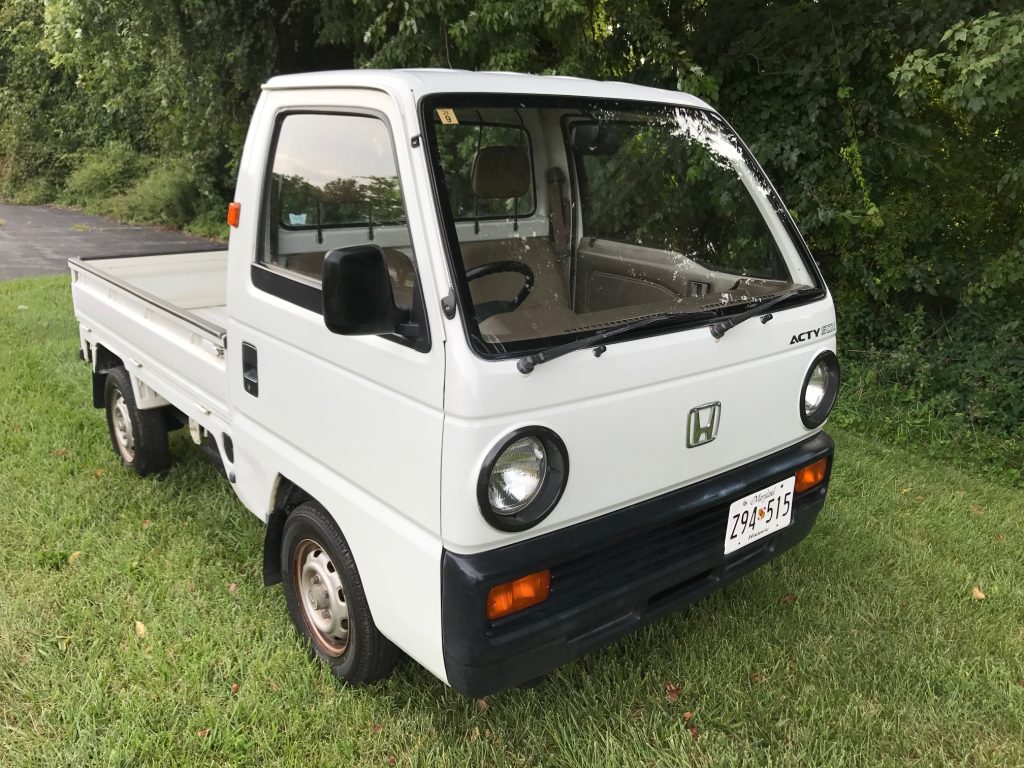The Honda Acty is one of the larger Kei vehicles in its class. Built to act as an economical working vehicle, they made the design for the working vehicle. This means that there is a focus on the cabin and on the bed for all the generations. Produced from 1977 to 2021, the Honda Acty rivals some of the other brands on the market such as the Suzuki Carry, the Daihatsu Hiject, and the Subaru Sambar. As they oriented the design for both flatbed and van construction, there are a few differences between each generation. Yet, regardless of the generation, the Honda Acty is a Kei truck worth having.

About Honda Acty Kei Trucks
Honda Acty trucks are actually an abbreviation. The true name of the Kei Truck is the Honda Activity. To simplify the name the Acty was adopted. Most of the vehicles are made in the Suzuka plant until 2021 when the Honda Acty was discontinued. For those wishing to import a Honda Acty, it is recommended that you choose a first or a second-generation vehicle. This will help to avoid having to meet any of the safety and emission regulations placed upon new imports of foreign vehicles.
Understanding the Generations
If you look at the titles for the Honda Acty, you may be a bit confused about which generation it pertains to. The vehicles are available in several models ranging from the TA to the HH4 and the E07Z. These models and numbers should be understood as follows. For the first generation, the models will be the TA, TB, TC, VD, and VH (the VD and VH referencing the van models). On the Second generation, the model ranges from the HA1 to the HH4. Third generations are for the HA6 and the HH6. The third generation also includes the E07Z. The fourth-generation includes an HA8 and continues the E072.
The first generation
First-generation models of the Honda Acty were produced from 1977 to 1988. During this ten-year span, the vehicle introduced both a truck and a van option. The design reflected this by having the engine in the midsection under the seats. Like most of the vehicles of its time, the engine, which was a 545CC 2-cylinder, was rear-wheel driven. It was not until later in the second generation models that a 4WD option was introduced.
The van is a 5 door and was not introduced to the first models. The Kei vans made their debut in 1979. This is two years after the Honda Acty TN360s were introduced to the market. As such, the vehicles carried many of the features from the Kei trucks. The van is a converted Kei Truck. Many of the features from the truck remain. Specifically, the rear lighting and the cabin features. Doors on the Kei vans included the cabin’s two doors, two side doors, and a rear hatch. The rear access has been used on first-generation models to create an easy access camper.
Second generation Honda Acty
The second generation saw the most changes for the Honda Acty. Primarily, you saw changes within the engine. Instead of the two-cylinder engine, the second generation models had an updated 3 cylinder. This was as a 547 and engine on the E059 model. With this an even more powerful engine on the latter E07A. As the engine changed, so did the driving options. With the newer models, automatic transmissions became unavailable.
Unlike some other Kei trucks on the market, the second generation of the Honda Acty is offered in a commercial option. This is the HA-4 series. Because the truck is offered in a 4WD option, navigation is easier. Also, inclusion of the low front and reverse gears makes second-generation models easier to use than the prior generation. Second-generation models are available at 4/5 speed for the manual transmissions and 3 speed for the automatic transmissions which were discontinued later.
Third generation
Introduced in May 1999 and continuing until December of 2009, the third generation changed to accommodate new vehicle laws. As such, the vehicle addresses the need for larger dimensions on a Kei truck and features within the cabin. Additionally, the chassis has been updated to have a larger bed. Like the other generation, the engine remains to be under the seating area and driven by a rear-wheel drive train. As with other generations, the engine was replaced with a more powerful one. In the E07Z models, the engine becomes a 656cc allowing for 52HP. This is an increase from the second generation’s HP, which averaged about 30.
With the Honda Acty van, the same design of the second generation was carried out with minor changes to the overall design. There was a bit of a change to mimic other Honda Models. However, it was not until near the fourth generation that the 3rd generation vans saw the curvature and modern design that we have now.
The last generation of Honda Acty
The last generation of the Honda Acty ran from December 2009 to 2021. On these models were the preservation of the E07Z and some of the third-generation models. The only major differences between the third and the last generations were in the safety and technology of the newer models. The wheelbase was shortened a great deal on the fourth generation to accommodate the need for larger cabin space. As such, the bed decreases in size. New models feature many of the same safety features you will find in a Suzuki Carry, the Daihatsu Hiject, and the Subaru Sambar.

Getting a Honda Acty
Though discontinued in 2021, you can still get a Honda Acty. There are several models which are available from the first to the fourth generation. If you are planning to import your Honda Kei Truck or van, ensure that you have the proper documentation and forms completed. Check with your local taxation and registration authority for current stipulations. Most 25-year-old models can be imported as a classic vehicle or for agricultural purposes.
